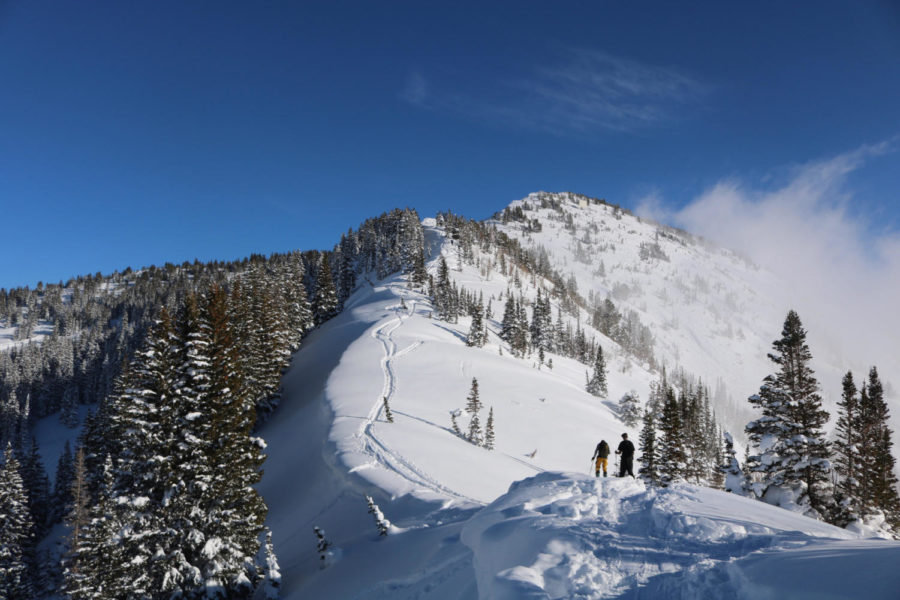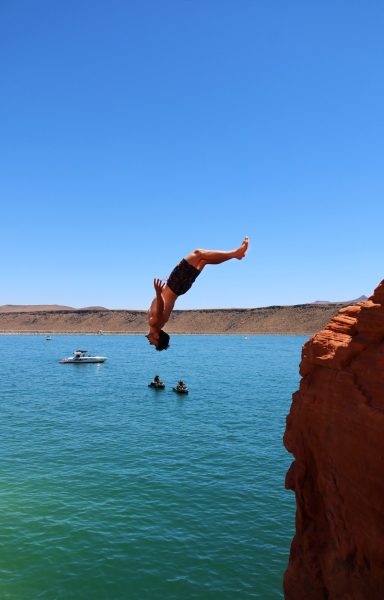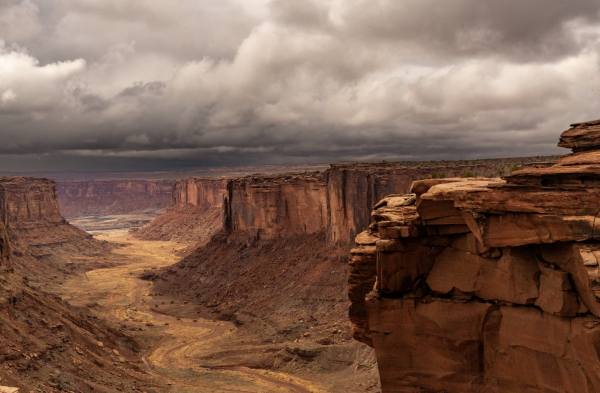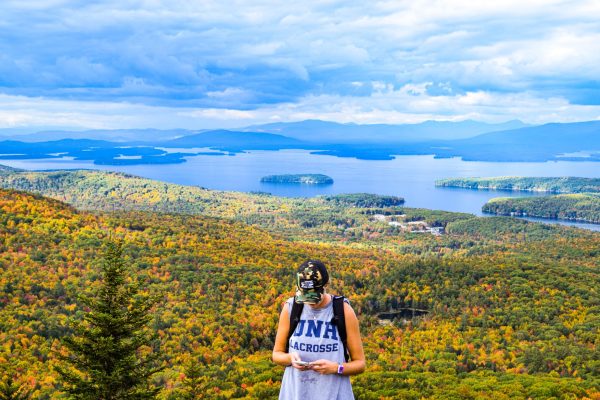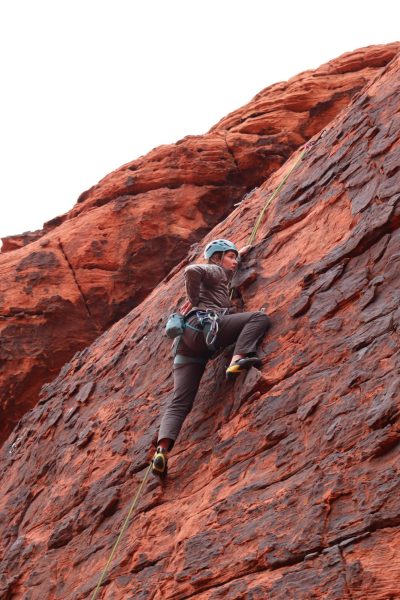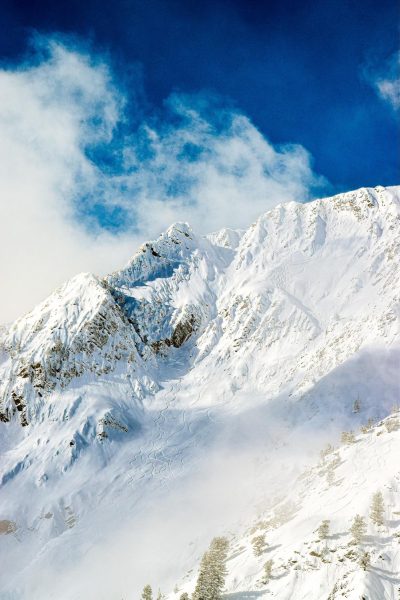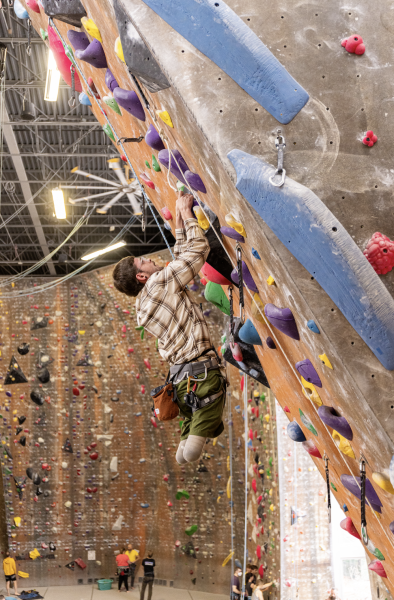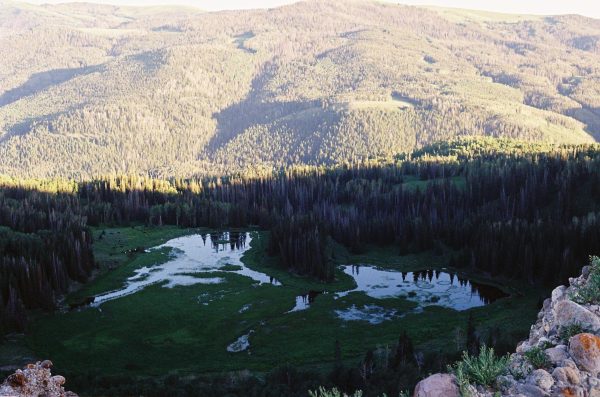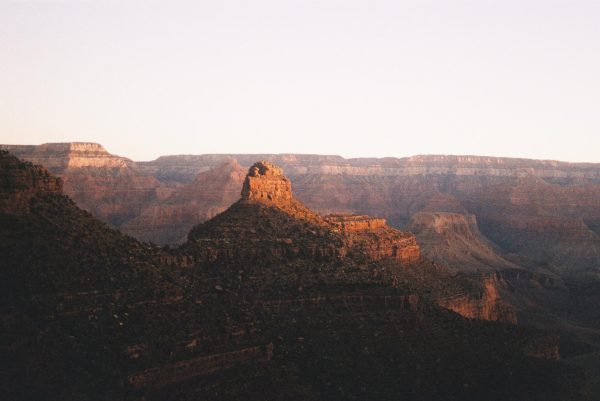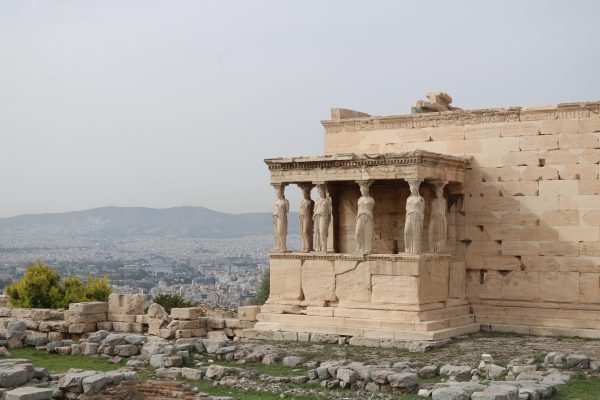Backcountry Bliss
Wind sprays the glittering snow particles across the mountain top, fine as diamond dust. The snow-swept peak gives the illusion of a bleached sand dune, an otherworldly sight in the midst of this frozen landscape.
Sunlight kisses your windburned face with the subtle warmth that only a mid-winter blue bird sky can. Clouds roll through the canyon up towards the towering tops at which you stand, obscuring the view of the valley below.
Your vantage point is well above the highest clouds in sight, making you question if there’s a point where the skies meet the heavens, wondering if you’ve reached it.
Your skis ache to glide through the virgin snow awaiting the descent down the mountain’s face, anticipating the feel of the “greatest snow on earth” beneath your feet …
The Greatest Untouched Snow on Earth.
Utah natives take pride in the claim this state has on its snow, saying with certainty that it’s in fact the “greatest.” And while anyone who’s had the opportunity to ski one of the resorts located on the Wasatch front after a big storm can testify to that statement, these four words carry a much deeper meaning outside the restrictions of boundaries.
Much deeper.
I’ve lived in Salt Lake City for over three years now, and I am never not blown away by the magnificent mountains that surround our beloved valley. Their presence demands attention, whether you’re admiring them while driving on the freeway or deep in their midst skiing the slopes, they require your appreciation.
The Wasatch are not humble mountains, and that is made even more apparent in the backcountry.
“It gives you a deeper appreciation for the mountains – you’re not the boss, you’re at the whim of the mountains and what they plan for the day; they’re allowing you out there” stated Garrett Hamilton, a good friend of mine and an avid backcountry skier.
Backcountry skiing has been around for centuries; however, it has just recently gained popularity as a sporting activity – well, recent when you consider how long it’s existed.
An article from a few years back in the Aspen Times states that “The number of backcountry skiers and snowboarders in the U.S. jumped almost 50% between the 2008-09 and 2013-14 winters,” and there’s no surprise as to why.
If you’re anything like me and are drawn to all the outdoor “Utah activities” – skiing, rock climbing, mountain biking, and hiking, to name a few – then backcountry skiing is also probably appealing to you. If this is the case, then you also probably know that many of these activities aren’t necessarily the cheapest to get into.
That being said, if you’re trying to save money, I would recommend NOT trying touring. You’ll probably love it, and then you’ll end up in the same predicament I’ve found myself in; stuck with the deep desire to get back to the backcountry but needing the funds to do so. Just one more thing to add to the list of things to save up for …
But it’s worth it. One glance from the top of the summit will convince you of that.
Despite the views and terrain that make touring in the Wasatch mountains specifically incredible compared to other places, a statistic released by Snowbrains.com at the beginning of January states that Alta Ski Area has received the most snowfall in the whole world this ski season … the WORLD!
Based on the numbers from January 9th of 2023, Alta has gotten 333 inches of snow so far, with Brighton and Snowbird not far behind. The US has definitely been blessed with an incredible amount of snow this winter, something that us skiers are by no means taking for granted.
While more snow brings more stoke for skiers, it also brings more risks to consider; avalanches being the main concern, especially in the backcountry.
If skinning to the top of the peak you are about to shred isn’t enough to take your breath away, then an avalanche definitely can if you aren’t careful. 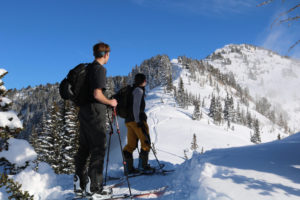
“In the mountains of the western United States, there are about 100,000 avalanches each year. Avalanches kill more than 150 people worldwide each year.” (National Geographic)
Avalanches are no joke and as they say, “the mountain always wins.” Just as a general rule of thumb, don’t set out to try and outsmart these wild forces of nature. You will lose.
Similar to the categories of hurricanes or earthquakes, avalanches have a system for ranking the severity and damage that they cause. They are ranked one through five, with five being the most destructive. The categories are attributed to an avalanche based on mass, length, and impact pressure (avalanche-center.org). Damage and runout are also considered when categorizing an avalanche.
Any avalanche ranked above one is generally considered medium, large, or extremely large and has the capability to bury or kill a person.
Wind loading, changing temperatures, precipitation, collapsing cornices, and persistent weak snow layers all carry the threat of causing avalanches. And while avalanches are scary and you can never predict them with 100% accuracy, there are measures you can take to be the most cautious and equipped you can be in the backcountry.
Avalanche one safety courses are a good place to start. Many outdoor companies and organizations offer courses that you can sign up for in states where touring is common. The University of Utah also offers an avalanche fundamentals course that you can take for credit or noncredit.
There are also tons of resources and websites dedicated to informing outdoor enthusiasts and backcountry skiers with all the necessary information on avalanche safety, statistics, and warnings. Backcountryskiing.org, nsp.org (National ski patrol), and backcountry.com are a few that provide detailed information on avalanche safety protocols.
Being prepared is crucial when skiing off the beaten track of the parameterized resorts, proper equipment and knowledge is a necessity.
Besides the skiing equipment of specialized skis or split board, bindings, poles boots, skins (for the bottom of the skis when you are hiking up), and snow clothes, there is a checklist of safety gear that needs to be on your person during the duration of this activity.
When touring in the backcountry you need a beacon, probe, collapsible shovel, walkie-talkie, and a backpack to put all of it in. I would also recommend water, snacks, and lots of layers since you will work up a sweat on the way up the mountain.
A beacon is a radio transceiver used as an emergency locator when someone gets buried in an avalanche, it’s how other people find the person under the snow. It sends off a beeping signal to the other people in the group once they turn their beacons to “receive,” and the signal gets louder the closer the searchers get to the person they are looking for.
A probe is essentially a long stick, similar to a tent pole, that you stick in the snow when trying to find the location of where someone could be buried in the snow from an avalanche. When you hit something under the snow that could potentially be the body of the person you are looking for, you will look at the depth markings on the probe to determine how far beneath the snow’s surface they are buried.
A collapsible shovel is like any other snow shovel, but it’s smaller and condensable in order to fit in your backpack when you are touring. And walkie-talkies are useful for communicating with the members you are skiing with for safety reasons so you don’t have to shout over long distances.
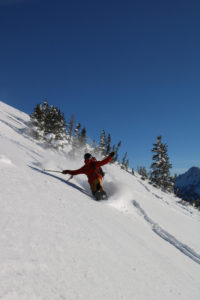
Other tools that are helpful are websites/apps that show the current danger ratings of avalanches in the area, real-time weather reports, route descriptions, slope angles, and 3D maps. The Utah Avalanche Center website, the Wasatch Backcountry ski map, and Fatmap are a few of them that can be utilized in the Salt Lake area really well.
Once you have all the gear, and at the very least a basic knowledge of avalanche safety and the backcountry, it’s time to hit the mountain.
I got the opportunity to go touring for the first time in mid-January of this year and it was nothing short of incredible. I may have (definitely have) underestimated the difficulty of the activity (or overestimated my physical shape at the time) but nevertheless, I had a wonderful time.
The avid backcountry skier friend of mine, Garrett Hamilton, took me and another friend up above Alta. After ensuring we had all the necessary equipment and a crash course on what to expect for our tour that day, we were off!
The conditions couldn’t be more perfect for my first backcountry skiing experience. The sun was shining and it took all of ten minutes for my body to start sweating and feel the need to stop and catch a breath. But we were “earning our turns” as Hamilton put it. My tired muscles would definitely agree … consider the turns earned.
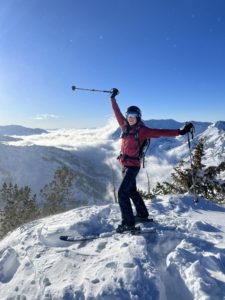
In the midst of his third season being a backcountry skier, Hamilton was a great teacher/leader on the mountain and expressed that while touring can appear daunting, it’s a very rewarding hobby and one that you can do for the rest of your life.
When it comes to being confident in the backcountry, Hamilton shared that going through an avalanche safety course and going touring with people you trust and who know what they’re doing is what will make you comfortable in this setting. “Experience builds experience” as he said.
Guess that means I should start saving money to buy a touring setup if I were to take his advice, and of course, if I want to “earn my turns” … the fresh powder and views make the turn earning worth it though.
One thousand percent. Worth it.

